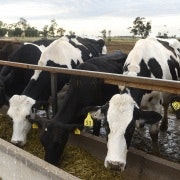Dai-ichi's Tower of strength
In 2008, when the giant Japanese insurer Dai-ichi Life arrived in Australia by acquiring just under 30 per cent of Tower Life, it was obvious that the acquisition was simply a beachhead for a larger-scale foray into the Australian life insurance market. The agreed $1.76 billion bid for Tower launched yesterday can be interpreted as a statement of real intent.
Since the number two life insurer in Japan – and one of the world's top ten life insurers – gained its indirect interest to the Australian market Tower has expanded quite significantly. It remains, however, a relatively modest player in the market partly because it has had to fund its expansion with retained earnings.
Dai-ichi, with $387 billion of assets and $44.5 billion of premium income, will bring a very big balance sheet to bear on Tower and has a driving motivation to accelerate Tower's growth.
The original rationale for the strategic investment in Tower was, as it is with many of the bigger Japanese companies, the demographics of its home market, where a rapidly ageing population is creating a stagnant-at-best market for their products.
It was those long-term threats to growth that caused the century-old Dai-ichi to demutualise earlier this year, raising $US11 billion process. The Tower holding was one of a string of offshore investments Dai-ichi made in preparation for the demutualisation. It has stakes in insurers in Taiwan, Vietnam, India and Thailand.
Since acquiring its Tower interest, for about $376 million, Dai-ichi has been very supportive and Tower itself has described a very close working relationship between the two groups and their management.
It was inevitable that once Dai-ichi became comfortable with the Australia market and Tower's management that it would seek to acquire the outstanding shares and bring its financial firepower directly next to Tower's businesses.
It isn't surprising that the Tower directors moved relatively quickly to endorse the bid, a 46.5 per cent premium to Tower's pre-Christmas closing price, a 58 per cent premium to its three-month volume-weighted average price, 19 times earnings and 1.4 times embedded value.
Compared to other recent transactions it is a demonstrably generous price, particularly as Dai-ichi's existing stake means there is little prospect of any counter-offer. Dai-ichi has followed a very Japanese playbook in its dealings with Tower rather than trying to finesse the prices it has paid.
A Dai-ichi-owned Tower could provide a very competitive force in the Australian life insurance market, given Dai-ichi's need to generate rapid growth outside Japan and the healthy state of the local market at present. While Dai-ichi is predominantly a life insurer, as indeed is Tower, it also has some ambitions in the funds management sector -- the $1.3 trillion Australian superannuation savings pool was one of the original factors in its interest in Tower.
At present the biggest players in individual risk are NAB, CBA and ANZ, although the merger of AMP and AXA will, if consummated, would create a player of similar, if not greater, size to NAB. That merger and the cultural tensions inherent in it would also, of course, provide an opportunity for a well-funded Tower to steepen its growth rate.
From the moment Dai-ichi entered this market it was apparent it had the potential to be a quite disruptive force, particularly as Japanese companies tend to put market share growth ahead of short term earnings – they take a longer term and more strategic view than this market affords locally-listed players. The agreed bid for Tower will therefore be viewed with some unease by the larger incumbents.
















